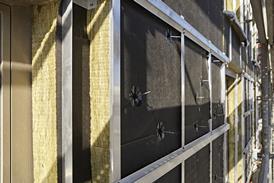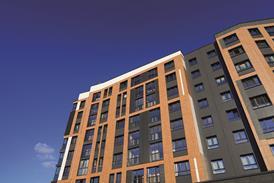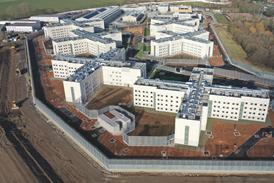Well, not really. Construction could do rather well under the new arrangements because it has an advantage other industries do not: its clients are the rest of British industry. So, if you think that what is good for the client is good for construction, this industry has a better basis for collaborative research than any other sector.
Construction is much like the software industry, not least because its famous for its overruns – and we all wince when we hear this. But there is another similarity: they are both platforms on which productive activity takes place.
Microsoft has sold us the idea that it makes business sense to replace our operating system every five years, and so we happily buy ever fatter versions of our packages. Could we sell buildings in this way? We know that, with the system as it stands, the economics stack up. Richard Haryott and others wrote a seminal paper for the Royal Academy of Engineering called The Long-Term Costs of Owning and Using Buildings. This made the term "1:5:200" part of our language. That is, if the construction cost for a commercial building is one, then maintenance and operating costs are five times greater and the business operating costs, including wages and overheads, are 200 times greater.
Recent evidence confirms that this is the case. The Architectural Healthcare Environment, a report writted by Bryan Lawson and Michael Phiri last year, compared ward refurbishments carried out at two hospitals, in Poole, Dorset and Brighton, East Sussex. The researchers were able to isolate the effect of a building redesign while keeping other factors, such as workplace culture, unaltered. Lawson found that time saved in patient treatment amounted to annual revenue savings of nearly £2000 per bed at Poole and nearly £7000 per bed at Brighton. When we realise that the annual capital cost per bed of the work at Poole was £2800 and at Brighton £4800, we can begin, in Richard Saxon's memorable phrase, to consider hospitals as "free goods".
At a conservative estimate, good quality buildings improve exam results by 5%. Some studies have shown that results in schools with good buildings are 17% higher
Another key point we have been missing is that the economic base of our society is changing. The factory economy has given way to the services economy, and that in turn is giving way to the creative economy. Richard Florida's The Rise of the Creative Class charts the rise of a new class of artists, designers, engineers, scientists, entrepreneurs and writers. In America, they already outnumber the traditional working class. It is a class, Florida argues, that needs to be treated differently in the workplace: it needs flexibility to create and buildings need to reflect this in how they are configured and where they are placed. John Seely Brown, the former director of science research centre Xerox PARC, argues that buildings need to provide the right physical and social context for creativity – to "leverage the community mind".
We are only just beginning to understand what this means, but as we do, it brings us closer to Microsoft's idea of selling an operating system at the start and in the middle of every decade. It opens the way for integrated service provision, in which products and services are brought together into integrated solutions. The airline industry has done this through leasing engines and selling, in effect, a number of "propulsion hours". In construction, the proposition has been worked up whereby space is leased with perhaps the facilities management thrown in. It's the right idea, but the offering is too modest. This "let us do it for you, it's easier in the long run" approach is only half the story. The bit we are missing is the "let us do it for you because you will get a continually updated product customised, or at least customisable, for your business".
Is this an idea we can sell? Probably not at present because we don't know enough – or perhaps care enough – about how buildings perform. With the exception of Bill Bordass and his work at the Usable Buildings Trust to promote post-occupancy studies, we know next to nothing about the effects of design on output.
We need to know more about what we can really do for the client. Design and output as an area of reasearch has been pioneered by Frank Duffy of architect DEGW, and is now an important part of David Gann's work at Imperial College's Innovation Studies Centre. The ideas are gaining ground. Sharon Wright, managing director of school design group School Works, announced at the recent BRE conference that "at a conservative estimate, good quality buildings improve exam results by 5%. Some studies have shown that results in schools with good buildings are on average 17% higher than similar schools with poor buildings".
Postscript
Adam Poole is a bid consultant.
























No comments yet